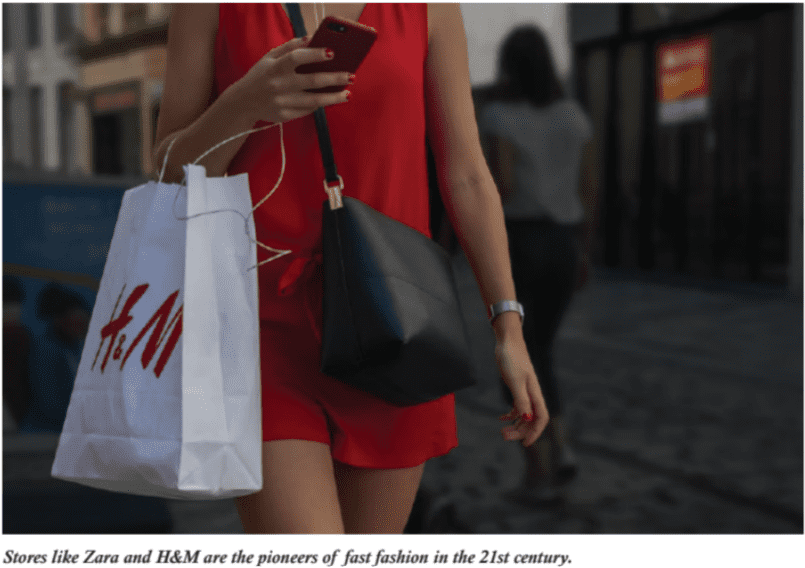
Brands like Zara, Forever 21, UNIQLO and H&M are widely popular and are known for their cheap and fashionable clothing. But the cost of making these clothes comes at a heavy price. These brands are the biggest players in the fashion industry and are also among the most damaging industries for the environment. They are fast fashion retailers who bring out large quantities of a variety of products and allow consumers to get more fashion and product differentiation at a very low price. ‘Fast fashion’ refers to cheaply manufactured and low priced garments that copy the latest catwalk styles and get quick entry into retail stores in order to maximise on the current fashion trends. It is called the fast fashion model because it involves rapid design, mass production and distribution as well as heavy marketing. Today, it takes less than fifteen days for a garment to move from the design stage to being sold physically in stores. The term has gained more prominence in recent times and is often used in conversations revolving around environmental consciousness as well as sustainability. According to the UN Environment Programme, the fashion industry, especially since the rise of fast fashion, has become the second largest consumer of water and is responsible for 10 per cent of carbon emissions and 20 percent of wastewater globally. It also dries up water sources and pollutes waterways. This is because these fast fashion retailers use about 700 gallons of water to make one cotton shirt and about 2,000 gallons to make one pair of jeans. Moreover, the textile dyes that they use contribute to polluting these waterways as the chemicals leak into the water, which also pose health risks to the general population. These brands also use synthetic fibres like polyester, nylon and acrylic which take several years to biodegrade. A report published by the International Union for Conservation of Nature (IUCN) in 2017 said that almost 35 per cent of all microplastics, which are tiny pieces of non-biodegradable plastic found in the ocean, come from these synthetic tex- tiles, especially polyester. This is an extremely worrisome phenomenon.
The fast fashion model is also an energy-intensive process. The production of plastic fibres and textiles needs huge amounts of petroleum. In addition, it releases volatile particulate matter and acids such as hydrogen chloride. Even cotton is not an environmentally friendly fabric to manufacture for fast fashion companies as they are exposed to a number of pesticides which are very harmful.
It is imperative that we as consumers stop buying from these fast fashion companies and instead choose locally produced garments. Sustainable fashion is the best alternative for fast fashion. To counter the environmental damage caused by fast fashion, sustainable fabrics like wild silk, organic cotton, hemp, linen and lyocell can be used in a responsible way.
10 Jan 2022
Rupashree Ravi